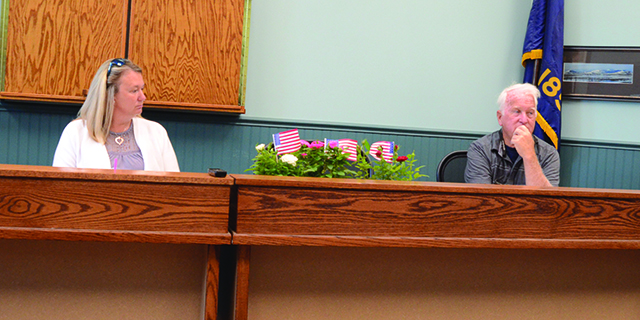New forest supervisor, no change
Published 1:26 pm Tuesday, July 28, 2015

- John George
The Wallowa-Whitman National Forest (WWNF) is fully into another year of planning, and never so self-evident as shown by the “guest comment” submitted by Tom Montoya in the Capital Press. The current planning process on the forest is to test the waters, hope the public is not paying attention, and wait for light public response at meetings throughout the region, or which is not happening.
The forest service has started its re-engagement with local communities on the forest plan revision, focusing on access, grazing and pace & scale of restoration. In total 1,094 official comments were received for the forest plan revision, with residents speaking out about the restriction of motorized access in the Blue Mountains through the designation of routes (closure of cross-country travel) and reduction of road densities (closure/obliteration of historic roads). The forests have participated in meetings and so far have brought nothing new to the public.
Trending
While the forests do not have all the meetings scheduled, I do appreciate them working on meeting with the pubic. Each meeting held so far has had a very strong calling for the forests to develop a forest plan that retains and protects the current level of open motorized access to the WWNF and Malheur, as well as to reinstate an open motorized access system to the Umatilla.
Most concerning is the WWNF continued development of Subpart A report of the Motorized Use Restriction Strategy. Subpart A is an internally driven decision, developed by specialist at the supervisor’s office that identifies the minimum roads needed to “administer” the forest. Mr. Montoya makes it very clear that the Subpart A report is NOT A DECISION document, however, his supervisor disagrees with him.
On June 12, 2015, Mr. Pena wrote in a response to my Freedom of Information Act (FOIA) request he was denying the request per Exemption 5 “to prevent injury to the quality of the agency decisions” an exemption claimed to protect a government decision, of which Mr. Montoya claims this is not a decision.
What is sold to the public as a flexible report, actually becomes a noose around the neck of rural communities as road closures and motorized use restrictions spring forth from this internally developed, agenda-driven document. This model has been used throughout the West, and is now rearing its head in Eastern Oregon in an attempt to restrict human interaction on the landscape, per the draft forest plan revision.
The road system identified under the Subpart A report would be the minimum roads needed to meet the current forest plans objectives, but does not have in its development any official public input combining the management objectives with the rural communities’ needs to access resources in the region. The recommendations from the Subpart A report will serve as a “springboard” to the Subpart B plan (closure of cross-country travel) that is scheduled to take place in 2016, and assist in moving the people towards a “closed forest” system for motorized access.
Residents expect to be involved in the process of developing the report, we will not be allowed to see the report until after it’s finalized, making it an ineffective tool for the region, except for those that mean to restrict motorized access. The report will serve as a baseline for future site-specific planning efforts to close/decommission roads and restrict open motorized access throughout the region.
Trending
Mr. Montoya states he “strongly encourages” further public involvement, but when the public requests to participate, they are told no.
While the WWNF appears to have deferred work on Subpart B, it has not. With work continuing on Subpart A, the larger process of developing a Motorized Use Restriction Strategy is ongoing, and moving forward without public input or involvement, and the WWNF continues to breed hard feelings and mistrust in the public.
Motorized use restrictions have generated a great deal of debate in Eastern Oregon over the last 8 years, as it should. We have aging residents, and families living below the poverty level, that are heavily dependent on open access to the resources that make our communities resilient to the adversities of today’s world. The WWNF and Region 6 need to understand that the same people that feel sustaining their customs, culture and economic sustainability are important, are the same people that cherish the natural resources around them.
The people openly accept the opportunity to engage with the WWNF and Region 6 on the Motorized Access Restriction Strategy and Forest Plan Revision, but must be fully included, and not brought into the process after plans are developed, as is currently being done.
John George is a native Eastern Oregonian and a member of Forest Access For All.









